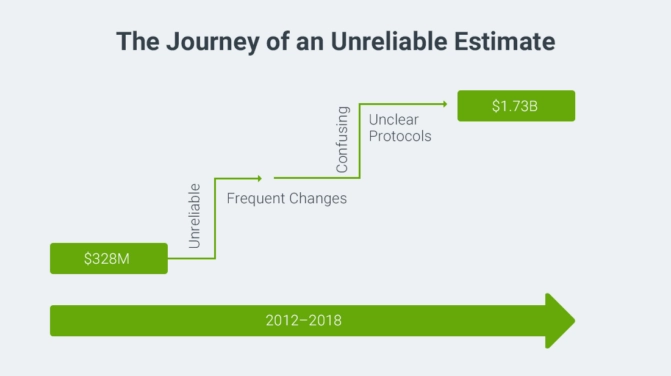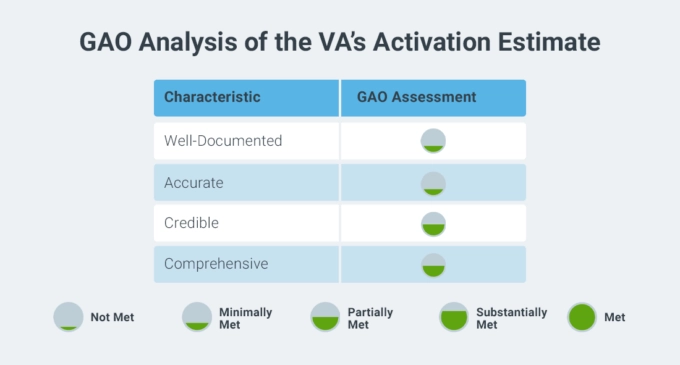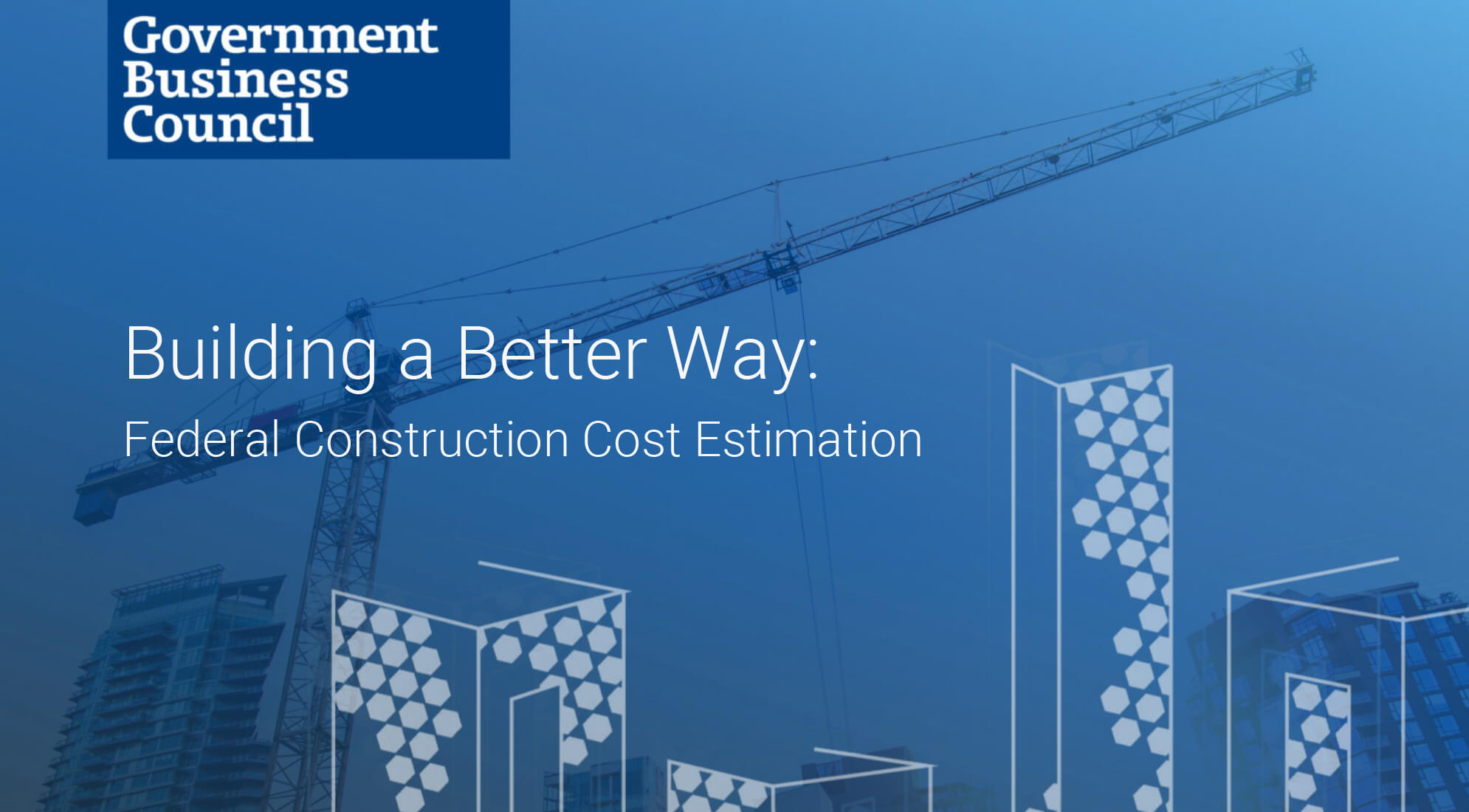A reliable Federal cost estimate generally stands atop four principal tenets. When all four tenets are present, they work together like pillars, giving the estimate sturdy and integrous support. But when one or more are missing, the foundation of the estimate can be shaky or untrustworthy. Those four tenets are:
- Comprehensiveness: whether the estimate covers all the components needed to complete the project
- Documentation: whether the agency has clearly demonstrated sourcing for each part of the estimate
- Accuracy: whether the sources used in the estimate are reliable and up to date
- Credibility: whether the estimate is reasonable, believable and up to industry best practice standards
The true art of estimating comes with building all four into each Federal cost estimate, and that is not an easy task. To demonstrate the difficulty, we have highlighted a high-profile use case when mistakes were made because the four tenets were forgotten.
What Happened?
Between 2012 and 2018, construction costs on a new veteran’s hospital in Denver skyrocketed to $1.73 billion, more than double the amount that had been Congressionally appropriated. Without a reliable estimate, it is difficult for the VA to make decisions for activating various facilities. Further, the lack of a credible and accurate estimate poses difficulties for Congress, which relies on estimates to make annual appropriations decisions.
As a result, the decline of public trust in the VA’s ability to effectively estimate and manage construction projects led Congress to outsource the Denver hospital construction and some other construction projects above $100 million to the Army Corps of Engineers.
Want to know more about the challenges facing modern Federal estimation practices? What about the opportunities at hand to improve Federal cost estimates? Government Business Council researched the state of Federal cost estimating and published their findings in a free eBook. Download it here and find out where current estimating practices stand.
How Did It Happen?
When analyzing the VA’s cost estimate documentation, GAO found that the estimate did not meet best practices. Specifically, the VA Denver hospital’s cost estimate only partially met two tenets (comprehensive and credible) and minimally met two others (well documented and accurate).
Unreliable and frequently altered cost estimations contributed to this increase, as well as unclear procurement protocols that caused confusion during the estimation phase.
Without any of the four characteristics of a reliable Federal cost estimate achieved as described in the GAO Cost Estimating and Assessment Guide, the estimate could not have been considered reliable. It was determined that unreliable and frequently altered cost estimations contributed to this increase, as well as unclear procurement protocols that caused confusion during the estimation phase.
Check out this on-demand webinar, Stemming the Rising Tide of Federal Project Overruns, to hear more about the work Gordian is doing to bring data-driven decision making to the Federal space in order to reduce budget overages.
The Solution
This story ended poorly for the VA. If it has one redeeming quality, however, it is that it now stands as an example of the consequences of forgoing these four key tenets. While these tenets are lofty, they are by no means unattainable – especially with the help of modern solutions.
Technology has evolved considerably since the initial GAO Best Practice guidance, and agencies can now leverage new tools to support the GAO’s updated cost estimating best practices. Gordian has been developing enterprise features, informed by GAO’s guidance, for our clients. As an example of, here’s a look at how Gordian’s RSMeans Data Online cloud-based estimating software platform follows the four tenets of Federal cost estimating:
- Comprehensiveness: A team of cost engineers and data scientists spends 22,000 hours every year researching, validating and analyzing costs to ensure their quality.
- Documentation: Advanced reporting features provide tremendous flexibility and transparency in the way markups are applied to various portions of the estimate. Plus, a notes field allows users to document calculations and other scope notes to ensure stakeholders can reconstruct the estimate effort.
- Accuracy: Gordian’s groundbreaking predictive cost data provides a more accurate way to account for fluctuations in commodity prices and market conditions, with greater specificity at the material and labor division levels driving more accurate estimates.
- Credibility: RSMeans Data has the industry standard for construction cost accuracy and reliability since the 1940s.
On the heels of significant software updates, many Federal agencies will want to consider how RSMeans Data Online and other Gordian software solutions support their continuous improvement and the implementation of best practices.








